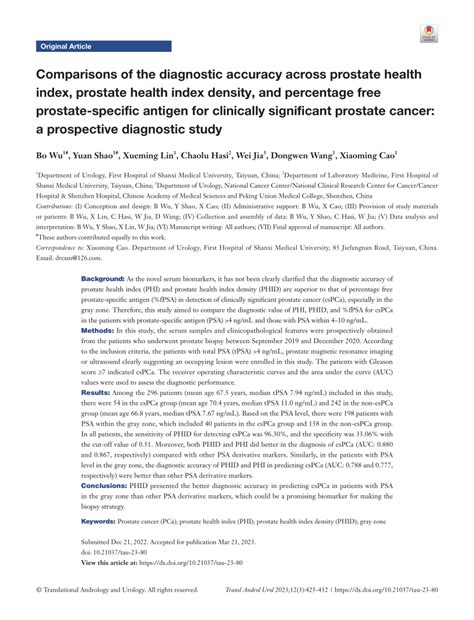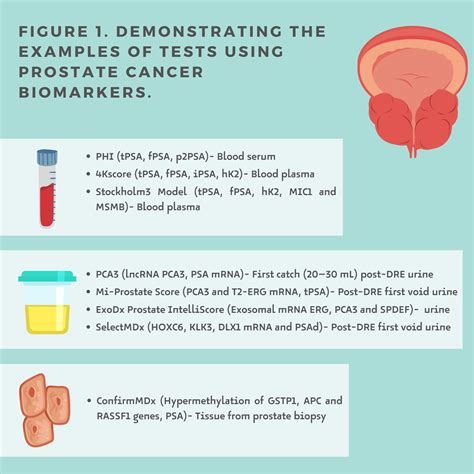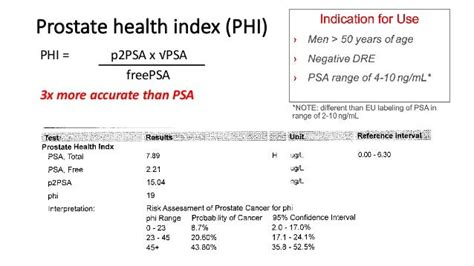The Prostate Health Index (PHI) has emerged as a significant advancement in the diagnosis and management of prostate cancer. As a non-invasive tool, PHI offers a more accurate and reliable method for detecting prostate cancer, reducing the need for unnecessary biopsies and associated complications. This article aims to provide an in-depth analysis of the Prostate Health Index, its components, and its implications for prostate health management.
Key Points
- The Prostate Health Index (PHI) is a diagnostic test that combines three different PSA markers to improve the accuracy of prostate cancer detection.
- PHI has been shown to reduce the number of unnecessary biopsies by up to 30%, thereby minimizing the risk of complications and improving patient outcomes.
- The test is particularly useful for men with elevated PSA levels, as it helps to differentiate between aggressive and non-aggressive prostate cancer.
- PHI has been approved by the FDA and is widely available in clinical settings.
- Studies have demonstrated that PHI can improve the detection of high-grade prostate cancer, leading to more timely and effective treatment.
Understanding the Prostate Health Index

The Prostate Health Index is a diagnostic test that utilizes a combination of three different prostate-specific antigen (PSA) markers: PSA, free PSA (fPSA), and [-2]proPSA. By analyzing these markers, PHI provides a more comprehensive understanding of prostate health, enabling healthcare professionals to make more informed decisions regarding patient care. The test is particularly useful for men with elevated PSA levels, as it helps to differentiate between aggressive and non-aggressive prostate cancer.
Components of the Prostate Health Index
The three components of the Prostate Health Index are:
- PSA: The total level of prostate-specific antigen in the blood, which can be elevated in men with prostate cancer, as well as other non-cancerous conditions.
- fPSA: The level of free PSA in the blood, which can help to differentiate between prostate cancer and other conditions.
- [-2]proPSA: A specific isoform of PSA that is more closely associated with aggressive prostate cancer.
By analyzing these three components, PHI provides a more accurate and reliable method for detecting prostate cancer, reducing the need for unnecessary biopsies and associated complications.
| Component | Description |
|---|---|
| PSA | Total level of prostate-specific antigen in the blood |
| fPSA | Level of free PSA in the blood |
| [-2]proPSA | Specific isoform of PSA associated with aggressive prostate cancer |

Clinical Applications of the Prostate Health Index

The Prostate Health Index has several clinical applications, including:
- Prostate cancer detection: PHI can help to detect prostate cancer more accurately and reliably, reducing the need for unnecessary biopsies and associated complications.
- Risk stratification: PHI can help to stratify patients according to their risk of aggressive prostate cancer, enabling healthcare professionals to make more informed decisions regarding patient care.
- Monitoring: PHI can be used to monitor patients with prostate cancer, helping to detect any changes in the disease and enabling timely and effective treatment.
By providing a more accurate and reliable method for detecting prostate cancer, PHI can help to improve patient outcomes and reduce the burden of prostate cancer on healthcare systems.
Studies and Research
Several studies have demonstrated the effectiveness of the Prostate Health Index in detecting prostate cancer and reducing the need for unnecessary biopsies. A study published in the Journal of Urology found that PHI reduced the number of unnecessary biopsies by up to 30%, while a study published in the Journal of Clinical Oncology found that PHI improved the detection of high-grade prostate cancer.
What is the Prostate Health Index?
+The Prostate Health Index is a diagnostic test that combines three different PSA markers to improve the accuracy of prostate cancer detection.
How does the Prostate Health Index work?
+The Prostate Health Index analyzes three different PSA markers: PSA, free PSA, and [-2]proPSA. By combining these markers, PHI provides a more comprehensive understanding of prostate health, enabling healthcare professionals to make more informed decisions regarding patient care.
What are the benefits of the Prostate Health Index?
+The Prostate Health Index has several benefits, including improved accuracy and reliability in detecting prostate cancer, reduced need for unnecessary biopsies, and improved patient outcomes.
In conclusion, the Prostate Health Index is a significant advancement in the diagnosis and management of prostate cancer. By providing a more accurate and reliable method for detecting prostate cancer, PHI can help to improve patient outcomes and reduce the burden of prostate cancer on healthcare systems. As research continues to evolve, it is likely that PHI will become an increasingly important tool in the management of prostate health.



